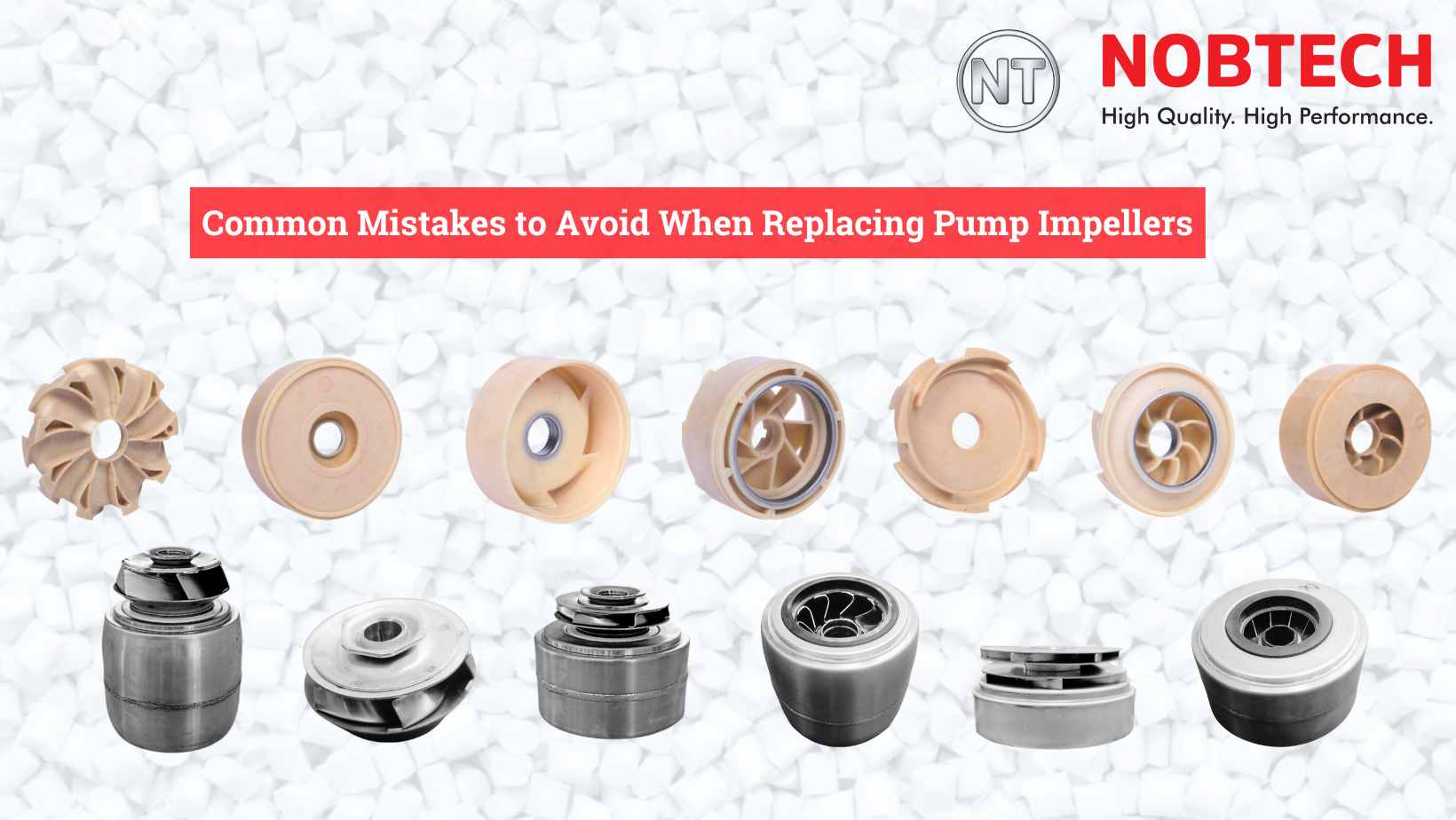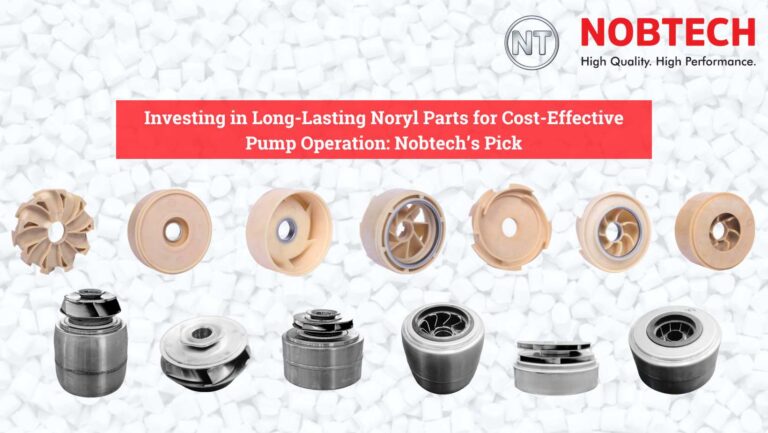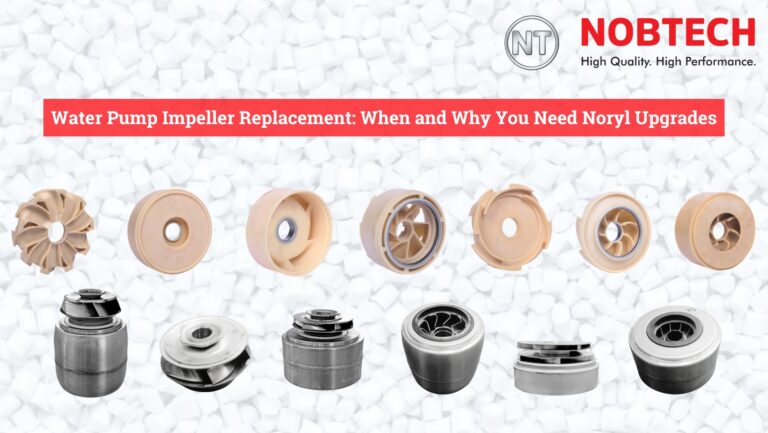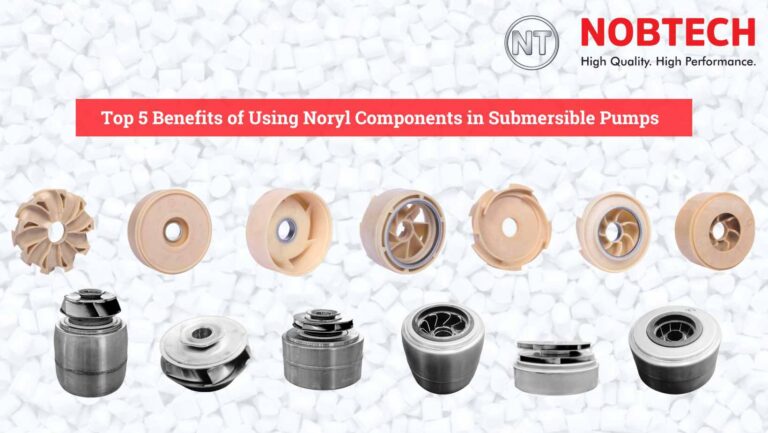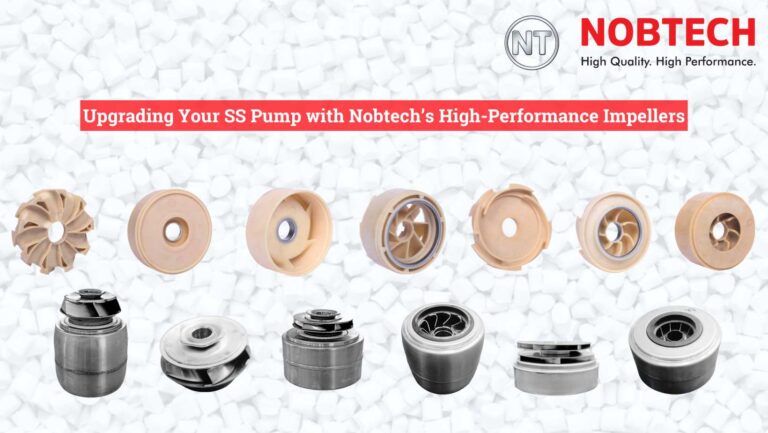Common Mistakes to Avoid When Replacing Pump Impellers
Replacing a pump impeller might seem like a straightforward maintenance task, but it’s a critical procedure where precision matters significantly. Errors during this process can lead to drastically reduced pump performance, increased energy consumption, premature wear on components, and even catastrophic pump failure. Understanding the potential pitfalls is the first step towards ensuring a successful replacement that restores or even enhances your pump’s efficiency and longevity. Many operators overlook subtle details, leading to costly downtime and repairs. Avoiding the Common Mistakes to Avoid When Replacing Pump Impellers is crucial for maintaining operational reliability, especially for businesses relying on consistent fluid transfer. For global pump manufacturers, exporters, OEMs, and large-scale procurement agents, sourcing high-quality components like those manufactured by NOBTECH, which specializes in Stainless Steel Submersible Pump Impellers and Bowls, as well as Noryl Submersible Pump Impellers and Diffusers, is key to preventing these issues from the outset.
Why Proper Impeller Replacement Matters
The impeller is the heart of any centrifugal pump, directly responsible for imparting energy to the fluid being moved. Its design, condition, and correct installation directly impact flow rate, pressure head, and overall efficiency. An improperly replaced impeller can disrupt the delicate hydraulic balance within the pump. If the wrong size or type is installed, or if it’s misaligned, the pump may struggle to meet its duty point, consuming more power for less output. Vibrations caused by imbalance or misalignment can lead to accelerated wear on bearings, seals, and shafts, significantly shortening the pump’s lifespan. Furthermore, leaks resulting from damaged or incorrectly seated seals during the replacement process can cause fluid loss, environmental hazards, and further damage to pump internals. For businesses where pump operation is critical, the consequences of a botched impeller replacement extend beyond maintenance costs to include production losses and potential safety risks. This highlights why understanding and circumventing the Common Mistakes to Avoid When Replacing Pump Impellers is not just best practice, but an economic imperative.
Pump impeller replacement mistakes – The Critical Errors
Executing an impeller replacement demands careful attention to detail. Several common errors can undermine the entire process, leading to suboptimal performance or immediate failure. Recognizing these potential Common Mistakes to Avoid When Replacing Pump Impellers is essential for maintenance teams and procurement specialists alike, ensuring that investments in parts and labor yield reliable results. Partnering with a quality supplier like NOBTECH can mitigate some risks by providing precisely engineered components.
Selecting the Incorrect Impeller Type or Size
One of the most fundamental errors is choosing an impeller that isn’t perfectly matched to the pump model and application requirements. Pumps are designed around specific impeller geometries (open, semi-open, closed), diameters, vane counts, and materials. Installing an impeller with even slightly different dimensions can alter the pump’s performance curve, leading to inefficiency or cavitation. Material compatibility is also critical; using an impeller material unsuitable for the fluid being pumped (e.g., abrasive slurries, corrosive chemicals) will lead to rapid wear or degradation. NOBTECH offers durable options like Stainless Steel Submersible Pump Impellers, ideal for demanding applications, and Noryl Submersible Pump Impellers, known for their excellent hydraulic efficiency and corrosion resistance. Always verify the part number and specifications against the pump’s manual or consult with a trusted supplier. Ensuring you have the correct component, perhaps sourced from https://nobtech.in/products/, prevents performance issues rooted in incompatibility. This is a frequent cause behind many Common Mistakes to Avoid When Replacing Pump Impellers.
Failing to Properly Prepare the Pump Housing
Before installing the new impeller, the pump casing or volute requires thorough preparation. Technicians sometimes rush this step, leaving behind debris, scale, or remnants of old gaskets. Any foreign material within the casing can obstruct flow, damage the new impeller upon startup, or prevent proper sealing. The mating surfaces where gaskets or O-rings sit must be meticulously cleaned and inspected for scratches, pitting, or warping. An uneven surface compromises the seal, leading to leaks. Similarly, the shaft shoulder and keyway where the impeller mounts must be clean and free from burrs or damage to ensure a snug and true fit. Neglecting this preparation is a hidden contributor to many impeller replacement failures. Quality components from manufacturers like NOBTECH deserve a clean and well-prepared environment to deliver optimal performance.
Incorrect Impeller Installation and Alignment
Proper installation technique is paramount. Common errors include installing the impeller backward (a surprising but frequent mistake, especially with certain designs), over-tightening or under-tightening the impeller retaining nut/bolt, and failing to ensure the impeller is correctly seated on the shaft and aligned within the casing. Misalignment, even by a small margin, introduces vibration, stresses the shaft and bearings, and can cause the impeller to rub against the casing, leading to rapid wear and reduced efficiency. Correct torque specifications for fasteners must be followed using a calibrated torque wrench. The clearance between the impeller vanes and the pump casing (or wear rings) is often critical, especially in certain pump types, and must be set according to manufacturer specifications. Precision-manufactured impellers, such as those from NOBTECH, help ensure consistent dimensions, but careful installation remains vital to avoid these Common Mistakes to Avoid When Replacing Pump Impellers.
Neglecting Seal and Gasket Replacement
An impeller replacement often necessitates disturbing the pump’s mechanical seals or packing, as well as various gaskets or O-rings. It’s a false economy to reuse old sealing components. Seals wear over time and may be damaged during disassembly. Old gaskets can become brittle or compressed, losing their ability to seal effectively. Always replace mechanical seals, packing, O-rings, and gaskets associated with the disturbed parts of the pump during an impeller change. Using a complete rebuild kit or sourcing high-quality individual seals and gaskets ensures leak-free operation post-replacement. Failure to do so turns a potentially successful impeller swap into a frustrating search for leaks shortly after reassembly. This oversight is one of the more easily avoidable Common Mistakes to Avoid When Replacing Pump Impellers.
Skipping System Checks Post-Installation
Once the pump is reassembled with the new impeller, the job isn’t finished. Before returning the pump to full service, several checks are crucial. Manually rotate the shaft (if possible and safe) to ensure the impeller spins freely without binding or scraping. After starting the pump, listen for unusual noises like grinding or excessive humming, and check for vibrations, which could indicate imbalance or misalignment issues missed during installation. Verify operating parameters – check the flow rate and discharge pressure against the expected performance curve for the new impeller. Monitor bearing temperatures and check for any leaks around seals and gaskets. Skipping these vital post-installation checks means potential problems aren’t caught early, potentially leading to significant damage. Proper validation ensures the replacement was successful and avoids the consequences of the Common Mistakes to Avoid When Replacing Pump Impellers.
The NOBTECH Advantage in Avoiding Replacement Issues
Choosing the right supplier for replacement impellers plays a significant role in preventing many common replacement errors. NOBTECH, with its focus on manufacturing high-quality Stainless Steel Submersible Pump Impellers and Bowls and Noryl Submersible Pump Impellers and Diffusers, provides components engineered for precision and durability. Their commitment to tight manufacturing tolerances ensures better fit and balance, reducing the likelihood of installation-related issues like misalignment or vibration, which are frequent Common Mistakes to Avoid When Replacing Pump Impellers. For global pump manufacturers, exporters, OEMs, and large-scale procurement agents who demand reliability and consistency, partnering with NOBTECH means sourcing impellers designed for optimal hydraulic performance and extended service life. The inherent quality of NOBTECH products simplifies the replacement process by providing parts that meet or exceed original equipment specifications, directly addressing concerns about incorrect sizing or poor fit.
Best Practices for a Smooth Impeller Replacement
Beyond avoiding specific mistakes, adhering to best practices ensures a successful outcome. Always consult the pump’s specific operation and maintenance manual before starting work; it contains critical information on procedures, clearances, and torque values. Use the correct tools for the job, including pullers, torque wrenches, and appropriate safety gear. Apply proper lubrication where specified, particularly on threads and sealing surfaces, to facilitate assembly and prevent galling. Take the time to double-check each step, especially alignment and fastener torque. If uncertainty arises, seeking advice from experienced technicians or the pump manufacturer is prudent. Organizations sourcing parts from reliable manufacturers like NOBTECH often benefit from consistent product quality, which simplifies adherence to these best practices. Following a methodical approach significantly reduces the chances of encountering the common Common Mistakes to Avoid When Replacing Pump Impellers.
Sourcing High-Quality Replacement Impellers
The quality of the replacement impeller itself is foundational to a successful repair and long-term pump reliability. Opting for cheaper, lower-quality impellers might save costs initially but often leads to premature failure, inefficiency, and more frequent replacements down the line – amplifying the impact of any Common Mistakes to Avoid When Replacing Pump Impellers. High-quality impellers, like the Stainless Steel and Noryl options manufactured by NOBTECH, offer superior resistance to wear, corrosion, and cavitation. They are typically better balanced and manufactured to tighter tolerances, ensuring smoother operation and optimal hydraulic efficiency. When sourcing parts, especially for critical applications or bulk procurement for manufacturing and export, partnering with a reputable specialist like NOBTECH is crucial. Their focus on specific materials like SS and Noryl ensures expertise and product consistency. Procurement agents and OEMs can explore tailored solutions and reliable supply chains by engaging with suppliers committed to quality, viewable perhaps at https://nobtech.in/products/. Investing in quality components is a direct investment in operational uptime and reduced maintenance headaches. NOBTECH understands the needs of its global clientele, providing impellers and bowls designed for performance and longevity.
Frequently Asked Questions (FAQs)
- What are the most obvious signs that a pump impeller needs replacing? Common indicators include a noticeable drop in pump performance (lower flow or pressure), increased noise or vibration during operation, higher energy consumption for the same output, or visible damage if the pump internals can be inspected.
- Can I switch to a different impeller material, like Stainless Steel or Noryl from NOBTECH, if the original was different? Yes, often you can upgrade materials for better longevity or chemical compatibility, provided the dimensions and hydraulic design are compatible with your pump model. NOBTECH‘s Stainless Steel impellers offer excellent durability, while their Noryl impellers provide great efficiency and corrosion resistance. Always ensure compatibility before making a switch.
- How critical is achieving the correct impeller clearance during replacement? Extremely critical, especially for certain pump designs like semi-open impeller pumps. Incorrect clearance can lead to significantly reduced efficiency, increased recirculation, or physical contact and damage between the impeller and casing. Always follow the manufacturer’s specifications precisely.
- Are specific tools absolutely necessary to avoid the Common Mistakes to Avoid When Replacing Pump Impellers? Yes, using the right tools like calibrated torque wrenches, appropriate pullers (to avoid damaging shafts or impellers during removal), feeler gauges (for setting clearance), and dial indicators (for checking alignment and shaft runout) is essential for a professional and error-free replacement.
Conclusion
Successfully replacing a pump impeller goes beyond simply swapping parts; it requires diligence, the right components, and adherence to best practices. By understanding and actively avoiding the Common Mistakes to Avoid When Replacing Pump Impellers, maintenance teams can ensure pumps are returned to service reliably, efficiently, and with an extended operational lifespan. Errors in selection, preparation, installation, or verification can easily negate the benefits of a new part, leading to wasted resources and potential operational disruptions. Partnering with quality manufacturers like NOBTECH, renowned for their Stainless Steel and Noryl submersible pump components, provides a strong foundation by ensuring access to precisely engineered, durable impellers suited for demanding global markets. Ultimately, careful workmanship combined with high-quality parts is the key to maximizing pump performance and minimizing costly downtime. Prioritizing quality and precision in every impeller replacement is a sound investment.
Wrapping Up!
This blog shares a lot about “Pump impeller replacement mistakes”
To know more about stainless steel and Noryl submersible impellers and bowls, visit- https://nobtech.in/products/
To explore solar pumps and pumping systems, do visit- https://www.slekaind.com/

